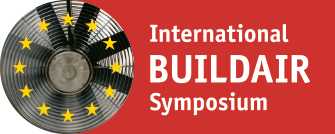Purpose of the work
Knowledge of air leakages in building envelopes, in location and magnitude, is essential for economical energy refurbishment of existing buildings. Hence, several measurement methods have been developed. The blower door test provides an accurate integral measurement of a building’s airtightness. However, localisation of leakage is usually achieved with smoke sticks and, therefore, is slow and cumbersome. Methods combining a blower door and thermography, e.g., differential images or sequential analysis (Bautools by BlowerDoor GmbH), have been reported but seem not to have found widespread adoption yet. A novel approach shall be presented based on blower door as excitation for lock-in thermography with the goal to achieve a fast and easy localisation of leaks by enabling the thermography of building facades from the outside with reduced influence of changing weather conditions widening the window of days for measurement.
Method of approach
In order to improve the robustness of the measurement compared to differential IR-images, where the blower door is operated once, in this approach, lock-in thermography is realized by using the blower periodically. This creates periodic changes in the temperature of the surface near the leaks, while the facade is observed with thermography. Subsequently, the time series of the thermographic images is analysed by Fourier transform at the frequency of excitation. In classical lock-in thermography, images of amplitude and phase response and images of amplitude at 0° and 90° are used for further analysis. In this case, the image of amplitude clearly shows the leaks. However, if thermography shall be performed outside the façade, changes in weather conditions or the general radiation environment during the measurement can create detrimental artifacts in the amplitude image. These artifacts, however, can be suppressed if the phase of the leaks is sufficiently separated from the phase of the artifacts by scalar multiplication with an evaluation vector in the complex plane.
Content of the contribution
The described method was demonstrated with measurement times of four minutes and compared to the method of differential thermography. Furthermore, artifact suppression by scalar product in the complex plane was developed.
Results and assessment of their significance
Results show that lock-in thermography can significantly improve the image compared to differential thermography. Furthermore, it was demonstrated that the artifacts resulting from a difficult thermographic environment can be further suppressed.
Conclusions
Lock-in thermography with excitation by a blower door opens the possibility of quickly measuring building facades even under difficult measurement conditions for thermography.
For further information please contact Johannes Pernpeintner at: Johannes.Pernpeintner@dlr.de





